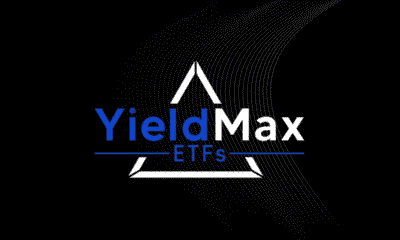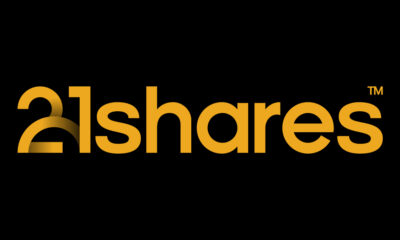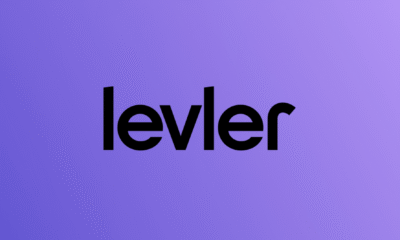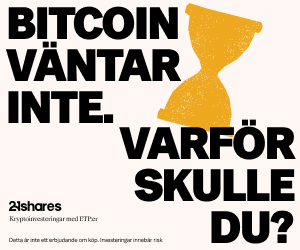Nyheter
Denna aktiemarknad kan stiga med 50 procent det kommande året
Publicerad
11 år sedanden

Denna aktiemarknad kan stiga med 50 procent det kommande året Denna vecka har vi tittat på en aktiemarknad som knappast rosat placerarnas portföljer under de senaste åren, men av just den anledningen finns det många som tror att det kan vara dags för en vändning under det kommande året, en vändning med besked. Vi har tagit del av en lång rad rapporter som visar på att det finns en hel del bedömare som tror att detta är en av de aktiemarknader som kommer att kunna explodera under 2015. Vad tror Du? Läs och döm själv.
Den grekiska börsen har sedan halvårsskiftet 2014 tappat med än halva sitt värde, bland annat efter det att det meddelats om nyval och att vi sett hur rubrikerna fyllts av uppgifter om att Grekland vill lämna EU-samarbetet, så kallade ”grexit”.
Exakt samma scenario kunde vi se under 2012 när Athenbörsen föll till den lägsta nivån på femton (15) år. När Grexit inte längre var aktuellt steg den grekiska börsen kraftigt och levererade ett veritabelt index med en kursuppgång om 150 procent. Det finns emellertid de som anser att det är osannolikt att Grekland kommer att kunna lämna Eurosamarbetet, och att det istället kommer leda till en börsuppgång på 50, ja till och med 60 procent under det kommande året.
Den grekiska börsen som enklast handlas med hjälp av den börshandlade fond som heter Global X FTSE Greece 20 ETF (NYSEARCA: GREK) har sedan halvårsskiftet förlorat nästan 50 % av dess marknadsvärde under denna period. Anledningen till dess kollaps är återkomsten av en Grexit scenario i rubrikerna, som har vunnit mark tack vare de tidigarelagda valen som kommer att äga rum söndagen den 25 januari och det faktum att vänsterns anti-åtstramning parti leder de preliminära omröstningarna. Om landet är fortfarande i euroområdet, kommer börs skjuta i höjden, precis som det gjorde under 2012, då börsen i Athen steg med mer än 150 procent under de 12 månader efter valet.
Byte av valuta skrämmer investerare
Först av allt, måste en presumtiv investerare inse att den enda anledningen som har fört den grekiska aktiemarknaden till sin nuvarande nivå är rädslan för ett byte av valuta. Om det händer kommer aktieägarna att se hur värdet på deras kapital går upp i rök på bara några dagar. Om detta inte händer så är det sannolikt att vi ser en rekyl uppåt, och att placerarkollektivets smarta pengar inser att de grekiska aktierna just nu är väldigt billiga till följd av det senaste halvårets nedgång.
Ett sådant rally bevittnades efter det senaste valet i juni 2012. Marknaden nådde sitt 15-årslägsta på 480 strax före valet, eftersom de två dominerande politiska partierna verkade ha nästan lika chanser att vinna valet; om Syriza (vänster, anti-åtstramning parti) vann, skulle Grexit varit sannolikt. Men rätt part, Ny demokrati, vann och därmed gick Grexit scenariot om intet, vilket resulterar i ett 150% rally under de närmaste 12 månaderna.
Nu ser vi exakt samma scenario, men med en skillnad. Enligt opinionsundersökningarna är det sannolikt att Syriza som kommer att sluta som segrare i det grekiska valet. Det finns emellertid ett stort antal väljare som inte bestämt sig ännu och dessa kommer att få en vågspelsroll och avgöra om Syriza får majoritet av platserna i parlamentet eller inte. Det gör att den politiska situationen ser sämre ut än vad den egentligen är. Syriza har emellertid kommit att slipa de vassa kanterna på sin politik under de senaste två åren. De politiska ledarna för Syriza har till exempel sagt att partiet kommer göra stora ansträngningar för att samarbeta med andra europeiska länder för att stanna kvar i euroområdet så länge åtstramningarna inte sträcks till ytterligheter.
Ändå är många placerare rädda för en del av politikerna från Syriza som sagt att de inte har några problem med att lämna Eurosamarbetet om övriga europeiska länder länder insisterar på att kräva åtstramningar från Grekland. Men även om Syriza vinner majoriteten av parlamentets säten, är Grexit fortfarande mycket osannolikt. Först av allt, om Syriza erhåller majoritet, kommer det bara att vara en marginell majoritet, det vill säga, omkring 155 av 300 platserna i det grekiska parlamentet. Därför kommer Syriza inte att kunna orsaka ett sådant radikalt beslut då åtminstone vissa av partiets medlemmar kommer att vara emot en sådan åtgärd.
Även om Syriza hade en enhällig övertygelse mot euron inom sitt parti, skulle det inte ha tillstånd att gå vidare med en sådan åtgärd. För att vara säker, har de andra två parterna (Ny demokrati och PASOK) alternativt styrs landet under de senaste 40 åren och därmed en vänsterregering för första gången i historien av landet, med en marginell majoritet, skulle Syriza knappast kunna ta Grekland ur Euro, eftersom ett sådant beslut skulle påverka landet i minst ett par decennier.
60 procent av väljarna vill stanna i eurosamarbetet
Det är också viktigt att notera att opinionsundersökningar har visat att 60 proccent av grekerna föredrar deras land stannar i eurozonen. Bortsett från de som känner sig positivt som medlemmar i valutaunionen, finns det också många medborgare som är rädda för ett Grexit scenario bara för att de är rädda för att navigera i okända vatten.
De har fått lära sig av media och sett exempel från Argentina att en förändring av valuta involverar bankrusningar, brist på importerade varor och misslyckas landet med att betala löner och pensioner i slutet av månaden så att de flesta människor är rädda vid tanken på sådant scenario och därmed de föredrar eurosamarbetet. Det är därför osannolikt att en vänsterregering som leder landet med en majoritet för första gången i landets historia kommer att fatta ett beslut som kommer att fatta ett beslut som kommer att påverka Grekland i generationer och att Syriza kommer att motsätta sig den allmänna opinionen.
Dessutom är det grekiska vänsterpartiet en ganska heterogen blandning, som har assimilerat flera politiker med olika åsikter. Således saknar partiet övertygelse och det är nästan omöjligt för politiskt parti med brist på övertygelse att gå vidare med ett så drastisk beslut som Grexit.
Minsta motståndets lag
Det grekiska politikerna har ett drag gemensamt med övriga europeiska politiker, alla regeringar har vid upprepade tillfällen visat att de följer det minsta motståndets lag. I korthet innebär det att politiker lägger ned minimal kraft på att lösa de problem som uppstår och att de skjuter de svåra radikala besluten på framtiden, långt in i framtiden när någon annan får ta hand om dem.
Att knuffa problemet framför sig är mycket enklare än att ta till drastiska åtgärder och bära den politiska kostnaden nu. Vi har bevittnat detta ett flertal tillfällen, till exempel i fråga om den enorma grekiska statskulden, ett problem som fortfarande måste lösas.
Sammanfattningsvis, även om det grekiska vänsterpartiet vinner majoriten i det grekiska parlamentet och kan lyckas nå en enhällig övertygelse mot euron inom det egna partiet, något som är högst osannolikt, är det mycket osannolikt att Syriza kommer att välja Grexit, som innebär att ge sig ut i okända vatten, såsom att hantera bankrusningar, brist på importerade varor och panik hos de egna medborgarna. Det är mycket mer sannolikt att Syriza kommer att välja att köra en viss omfördelning av landets tillgångar enligt dess principer snarare än att gå mot alla euro medlemmar, eftersom den senare troligen skulle resultera i ett tidigt slut på partiets första period vid makten.
Osannolikt att vi ser en Grexit
Av ovanstående orsaker är det osannolikt att vi ser en Grexit. Aktiemarknaden verkar vara av samma åsikt efter den grekiska börsen i dag handlas till en nivå som är 60 procent högre än vad den handlades till veckan innan det föregående valet i Grekland. I dag är Syriza en favorit att segra vid valurnorna, 2012 var partiet en osannolik kandidat att vinna valet i Grekland. Av den orsaken ser vi det som osannolikt at anta att vi får se en Grexit under 2015.
Om Syriza vinner och får majoriteten i landets parlament kommer begreppet Grexit att dyka upp på löpsedlarna och då kommer oron, något som sänker aktiekurserna på den grekiska aktiemarknaden. Det betyder att vi kanske inte har sett en botten ännu, de grekiska politikerna har lovat sina väljare att de har för avsikt att motsäga sig nya åtstramningsåtgärder och ber om en nedskrivning av den ohållbara statsskulden. Det betyder emellertid att Syriza kommer att tvingas in i en konflikt med så gott som varenda europeisk politiker, något som kommer tvingar ned aktiekurserna. I alla fall initialt, sedan kommer grekerna att tvingas kompromissa, och det är något som bör leda till att aktiemarknaden återfår förtroendet för Grekland.
Från 800 till….
Den grekiska börsens generalindex handlas till cirka 800 i dagsläget, en nivå som kan komma att studsa till 1 200 eller kanske 1 300, nivåer som detta index handlades kring innan oron för Grexit dök upp. Skulle detta inträffa innebär det en uppgång mellan 50 och 60 procent under det kommande året. Aktiemarknaden kommer sannolikt att diskontera de positiva effekterna av de grekiska politikernas kompromisser långt innan de verkligen inträffar. Om Grekland blir kvar i eurosamarbetet ärr sannolikheten för att börsen i Athen faller att betrakta som låg, allt annat lika, men visst finns risken. Det finns däremot en risk i att köpa grekiska aktier, eller börshandlade fonder som replikerar utvecklingen på denna marknad, om Grexit blir verklighet. I detta fall är det sannolikt att anta att värdet på de grekiska aktierna kommer att erodera som en följd av en valutarelaterad värdeminsking som kan vara så hög som 75 procent. Detta scenario känns emellertid osannolikt, även om de skall tas i beaktande. Societe Generale uppskattar att sannolikheten för att Grexit kommer att inträffa är mindre än 10 procent.
Du kanske gillar
-


Investerarna söker fonder som ger exponering mot försvarsindustrin
-


Investerarnas intresse kraftigt förändrat under februari 2025
-


De mest eftersökta ETFerna i januari 2025
-


De mest eftersökta ETFerna i december 2024
-


Investera i Grekland med hjälp av en börshandlad fond
-


DPYG ETF fastighetsinvesteringar från den utvecklade världen valutasäkrade till pund
Nyheter
FalconX förvärvar den ledande ETP-leverantören 21shares, vilket accelererar konvergensen av digitala tillgångar och traditionell finans
Publicerad
14 timmar sedanden
22 oktober, 2025
Förvärvet förenar FalconX marknadsledande Prime Brokerage-plattform med 21shares ETP-infrastruktur för att främja investeringsprodukter för digitala tillgångar
Markerar FalconX tredje strategiska transaktion under 2025, vilket understryker dess avgörande roll i att forma ekosystemet för digitala tillgångar
FalconX, en ledande institutionell Prime Brokerage-leverantör för digitala tillgångar, meddelade idag att de har gått med på att förvärva 21shares, leverantören av världens största utbud av börshandlade fonder och produkter (ETFer/ETPer) inom kryptovaluta. Transaktionen representerar en viktig milstolpe i FalconX strategi att accelerera konvergensen av noterade marknader och digitala tillgångar, samtidigt som den stärker sin globala närvaro i USA, Europa och Asien-Stillahavsområdet.
I en av de viktigaste ETP-branschtransaktionerna de senaste åren sammanför förvärvet 21shares expertis inom utveckling och distribution av tillgångsförvaltningsprodukter med FalconX institutionella infrastruktur, struktureringskapacitet och riskhanteringsplattform.
Tillsammans kommer de två företagen att accelerera skapandet av skräddarsydda investeringsprodukter som möter den växande institutionella och privata efterfrågan på reglerad exponering för digitala tillgångar.
Sedan grundandet 2018 av Hany Rashwan och Ophelia Snyder har 21shares vuxit till en global ledare inom digitala ETPer och förvaltar tillgångar till ett värde av över 11 miljarder dollar fördelat på 55 noterade produkter per den 30 september 2025. Dess egenutvecklade teknikplattform och väletablerade nätverk av partners ligger till grund för deras förmåga att snabbt och i stor skala lansera nya produkter på marknaden. FalconX, medgrundat av Raghu Yarlagadda, har underlättat handelsvolymer på över 2 biljoner dollar och en global kundbas på över 2 000 institutioner, tack vare sin kryptobaserade handels-, kredit- och teknikinfrastruktur.
”21shares har byggt en av de mest betrodda och innovativa produktplattformarna inom digitala tillgångar”, säger Raghu Yarlagadda, VD för FalconX. ”Vi bevittnar en kraftfull konvergens mellan digitala tillgångar och traditionella finansmarknader, då krypto-ETPer öppnar nya kanaler för investerarnas deltagande genom reglerade, välbekanta strukturer. FalconX har byggt den institutionella ryggraden för handel, derivat och kredit, och att utöka den infrastrukturen till börsnoterade marknader genom 21Shares är ett naturligt nästa steg mot att stärka marknadseffektiviteten. För FalconX är detta en medveten, långsiktig investering i att bygga ett varaktigt företagsvärde över marknadscykler.”
”Under de senaste 8 åren har vi byggt 21shares verksamhet från 0 dollar till mer än 11 miljarder dollar i förvaltat värde. Vi har skalat upp för att nå miljontals kunder i alla hörn av världen och fört in dem i krypto med våra produkter och vår forskning”, säger 21shares grundare Ophelia Snyder och Hany Rashwan. ”Vi ser verkligen fram emot att FalconX fortsätter att bygga vidare på denna starka grund för nästa kapitel i 21shares utveckling.”
”Vårt mål har varit att göra kryptoinvesteringar tillgängliga för alla genom branschledande börshandlade produkter”, säger Russell Barlow, VD för 21shares. ”Nu kommer FalconX att göra det möjligt för oss att agera snabbare och utöka vår räckvidd. Tillsammans kommer vi att vara pionjärer inom lösningar som möter de ständigt växande behoven hos investerare i digitala tillgångar världen över.”
Efter slutförandet kommer 21shares att fortsätta förvaltas oberoende under FalconX-paraplyet. Barlow kommer att fortsätta som VD för 21shares och arbeta nära ledningsgruppen på FalconX för att främja en gemensam vision för framtiden för ekosystemet för digitala tillgångar. Inga förändringar av konstruktionen eller investeringsmålen för de befintliga 21shares ETPerna (Europa) eller ETFerna (USA) är planerade.
Detta förvärv bygger på FalconX strategi för 2025 för att stärka sin globala verksamhet inom handel, kapitalförvaltning och marknadsinfrastruktur. Det följer integrationen av Arbelos Markets och majoritetsandelen som togs i Monarq Asset Management tidigare i år, tillsammans med expansioner i Latinamerika, Asien-Stillahavsområdet och Europa, Mellanöstern och Afrika. I takt med att digitala tillgångar utvecklas till vanliga investeringsprodukter placerar detta drag FalconX i centrum för hur institutioner och investerare får tillgång till kryptoekonomin.
Om FalconX
FalconX är en ledande mäklarfirma för digitala tillgångar för världens främsta institutioner. Vi erbjuder omfattande tillgång till global likviditet för digitala tillgångar och ett komplett utbud av handelstjänster. Vårt dedikerade team, som är tillgängligt dygnet runt för konto-, operativa och handelsbehov, gör det möjligt för investerare att navigera på marknaderna dygnet runt. FalconX Bravo, Inc., ett dotterbolag till FalconX, var den första CFTC-registrerade swap-handlaren som fokuserade på kryptovalutaderivat.
FalconX stöds av investerare som Accel, Adams Street Partners, Altimeter Capital, American Express Ventures, B Capital, GIC, Lightspeed Venture Partners, Sapphire Ventures, Thoma Bravo, Tiger Global Management och Wellington Management. FalconX har kontor i Silicon Valley, New York, London, Hongkong, Bengaluru, Singapore och Valletta. För mer information, besök falconx.io eller följ FalconX på X och LinkedIn.
”FalconX” är ett marknadsföringsnamn för FalconX Limited och dess dotterbolag. Tillgängligheten av produkter och tjänster är beroende av jurisdiktionella begränsningar och FalconX-enhetens kapacitet. För mer information om vilka juridiska personer som erbjuder specifika produkter och tjänster, vänligen se informationen på vår offentliga webbplats, som ingår häri, eller kontakta din relationskontakt.
Om 21shares
21shares är en av världens ledande leverantörer av börshandlade produkter för kryptovaluta och erbjuder de största sviterna av fysiskt stödda krypto-ETPer på marknaden. Företaget grundades för att göra kryptovaluta mer tillgänglig för investerare och för att överbrygga klyftan mellan traditionell finans och decentraliserad finans. 21shares noterade världens första fysiskt stödda krypto-ETP 2018 och byggde upp en sjuårig meritlista av att skapa börshandlade fonder för kryptovaluta som är noterade på några av de största och mest likvida värdepappersbörserna globalt. Med stöd av ett specialiserat forskarteam, egenutvecklad teknik och djupgående expertis inom kapitalmarknaden levererar 21shares innovativa, transparenta och kostnadseffektiva investeringslösningar.
För mer information, besök www.21shares.com.
Nyheter
Hybridreplikering: nästa stora grej för ETFer?
Publicerad
15 timmar sedanden
22 oktober, 2025
ETFer replikerar sitt index antingen fysiskt eller via syntetisk replikering – nu introduceras en ny replikeringsmetod av Scalable Capital
I ETF-världen sker det mindre och större produktrevolutioner då och då. En av dessa i år är förmodligen den nya ”hybridreplikeringen”. I den här artikeln tittar vi närmare på vad detta handlar om och vem som är först med att använda den i sina ETFer.
Hybridreplikering: Vad är det?
Replikeringsmetoder för ETFer kunde tidigare delas in i två grundläggande varianter: Fysisk och syntetisk replikering (även om fysisk replikering fortfarande har en underkategori med ”optimerad sampling”).
Som namnet ”hybridreplikering” antyder är denna nya replikeringsmetod en blandning av fysisk och syntetisk replikering.
ETFen replikerar således dynamiskt sitt underliggande index och kan använda både den ena och den andra varianten för att följa sitt index. Detta kan vara särskilt fördelaktigt för brett diversifierade globala ETFer för att optimalt kunna följa respektive delmarknader.
Vi ska titta närmare på exakt hur detta fungerar och fördelarna och nackdelarna med denna metod om en stund. Men först ska vi titta på de grundläggande skillnaderna mellan de olika replikeringsmetoderna.
Skillnaden: Fysisk, syntetisk och hybridreplikering av ETFer
I grund och botten erbjuder varje form av replikering vissa fördelar och nackdelar. Det är därför det tidigare fanns tre olika replikeringsmetoder som ETFer kunde använda för att replikera sitt motsvarande index. Nu läggs hybridreplikeringsmetoden till:
- (Fullständig) fysisk replikering används för att spåra lättillgängliga och mycket likvida marknader. ETF:er på DAX 40, FTSE 100 eller S&P 500 replikeras därför ofta direkt och fullständigt. De aktier som ingår är bland de största aktiebolagen i respektive land och är lätta att handla med. Dessutom är ansträngningen från ETF-leverantörernas sida att köpa några dussin eller några hundra aktier begränsad.
- Optimerad sampling används huvudsakligen för stora index med flera tusen aktiebolag. För att följa ett globalt globalt aktieindex som MSCI ACWI IMI räcker det till exempel att köpa ett representativt urval på cirka 3 500 aktier istället för de cirka 9 000 aktier som indexet innehåller. Detta sparar ETFen, och därmed dig som investerare, pengar och är mycket mer effektivt.
- Syntetisk replikering används företrädesvis för marknader som är svåra att komma åt, där direktköp av aktier är alldeles för dyrt eller försvåras av regulatoriska förhållanden. Swap-ETFer erbjuder också strukturella fördelar på vissa marknader – till exempel när det gäller källskattebesparingar. Mer om detta strax …
- Hybridreplikering är en kombination av fysisk och syntetisk replikering. En ETF som använder hybridreplikering kan själv inom ETFen bestämma vilka marknader den vill replikera direkt via fysisk replikering och vilka marknader som är bättre inkluderade i portföljen via swappar.
Jämförelse av ETF-replikeringsmetoder
| Fysisk (fullständig) | Fysisk (sampling) | Syntetiskt | Hybrid | |
| Replikerings- metod | Fullständig replikering | Sampling | Swap-based | Blandning av fysisk och syntetisk replikering |
| ETF-beskrivning | Indexet replikeras 1:1 i ETFen | ETF:n innehar ett representativt urval av indexaktier | Indexreplikering sker via en swaptransaktion | ETF innehar aktier både direkt och via swappartners |
| Underliggande tillgångar | Aktier, obligationer | Aktier, obligationer | Aktier, obligationer, råvaruindex, penningmarknadsindex, korta och hävstångsindex | Aktier |
| Typiska egenskaper hos index- komponenterna | Likvida värdepapper | (Delvis) illikvida värdepapper | Likvida och illikvida värdepapper, investeringsrestriktioner (handelsrestriktioner, beskattning), olika tidszoner | Likvida och illikvida värdepapper, investeringsrestriktioner (handelsrestriktioner, beskattning), olika tidszoner |
| Idealt antal indexkomponenter | Lågt | Högt | Låg till hög | Låg till hög |
| Ideal utdelnings- policy | Utdelande och ackumulerande | Utdelande och ackumulerande | Övervägande ackumulerande | Övervägande |
| Exempel index | DAX, Eurostoxx 50, FTSE 100, Dow Jones 30 | MSCI World, MSCI Emerging Markets, MSCI ACWI IMI | MSCI World, MSCI Emerging Markets, Eurostoxx 50 Rohstoff-Indizes, Short DAX, Leverage DAX | MSCI World, MSCI Emerging Markets, MSCI ACWI IMI, Eurostoxx 50 |
Hybrida replikerande ETFer är för närvarande endast tillgängliga på aktieindex
Hur fungerar hybridreplikering med ETFer?
Styrkorna med den nya replikeringsmetoden är särskilt tydliga i brett diversifierade aktieindex som MSCI ACWI eller FTSE All World. Syftet med hybridreplikeringsmetoden är att kombinera fördelarna med fysisk replikering med fördelarna med den syntetiska replikeringsmetoden. Hur fungerar detta i praktiken?
Ett exempel är swap-ETFer på S&P 500, som har en avgörande fördel jämfört med sina fysiskt replikerande syskon – det finns ingen källskatt på utdelningar.
Hur då? Medan fysiskt replikerande ETFer måste betala minst 15 % källskatt på amerikanska utdelningar eftersom de investerar direkt i amerikanska aktier, byter en swap-ETF helt enkelt indexets avkastning med ett motsvarande finansinstitut (motparten eller swappartnern).
Inga amerikanska aktier krävs i ETFens bärarportfölj. Och där inga amerikanska aktier köps direkt uppstår ingen källskatt. Detta är också anledningen till att syntetiska ETFer på S&P 500 har något högre långsiktig avkastning än fysiska S&P 500-ETFer.
Med syntetiska ETFer kan investerare också dra nytta av en unik strukturell dynamik på den kinesiska lokala A-aktiemarknaden. Denna specifika aktiemarknad är starkt begränsad eller reglerad och erbjuder samtidigt en attraktiv miljö för professionella investerare (t.ex. hedgefonder) som följer marknadsneutrala strategier.
Dessa investerare har dock ofta begränsad tillgång, till exempel för blankning för att säkra sin marknadsrisk. Som ett resultat är dessa marknadsaktörer beredda att betala swap-motparterna i syntetiska ETFer (vanligtvis stora banker) en premie på den korta exponering som motparterna är exponerade för.
Denna extra premie förs delvis vidare till investerare i syntetiska A-aktie-ETFer och har historiskt sett lett till överavkastning. Premien kan fluktuera över tid och är främst beroende av efterfrågan från dessa marknadsaktörer.
Jämförelse
En nackdel med en syntetisk ETF jämfört med en fysiskt replikerande ETF är att den kanske inte kan genomföra värdepappersutlåning om den inte innehar de nödvändiga värdepapperen i sin portfölj. Många swap-ETFer använder ändå inte värdepappersutlåning. Detta är dock ett vanligt sätt för ETF:er att generera ytterligare intäkter för fondinvesterare.
Motpartsrisk med swap-ETFer
Med swap-ETFer anges ofta den så kallade motpartsrisken som en stor nackdel. Men är risken med swap-ETFer verkligen så stor? Det korta svaret är: Nej. Därför att:
- Som regel innehar både ETFen och swap-motparten säkerhet i form av likvida värdepapper.
- Denna säkerhet måste alltid fysiskt säkra minst 90 % av nettotillgångsvärdet (NAV). Eller tvärtom: motpartsrisken är begränsad till maximalt 10 % av fondens tillgångar och balanseras dagligen.
- I praktiken är syntetiska ETFer ofta översäkrade (säkerhet > NAV) och du kan när som helst se säkerhetsportföljen och de valda swap-partnerna transparent på webbplatserna för många ETF-leverantörer.
- Hittills har europeiska investerare inte lidit några förluster på grund av swap-motpartsrisk – inte ens under de allvarligaste kriserna (t.ex. 2008 och 2020).
Och det är här hybridreplikeringsmetoden kommer in i bilden – eftersom den till exempel kan användas för att syntetiskt replikera den amerikanska marknaden ”källskatteoptimerad” i en global ETF, medan den europeiska eller japanska aktiemarknaden fysiskt replikeras ”värdepappersutlåningskonformt”. Resultatet är faktiskt kombinationen av ”det bästa av två världar” – eftersom respektive ETF optimalt kan kartlägga motsvarande delmarknader beroende på de strukturella förhållandena och därmed möjliggöra en minimalt högre avkastning för dig som ETF-investerare.
Viktigt: Syntetiska ETFer kan också låna ut värdepapper från carrierportföljen. Det beror sedan på vilka värdepapper i carrierportföljen som är efterfrågade och hur. Med högre efterfrågan eller mindre likviditet kan till exempel vanligtvis högre avkastning uppnås än med mycket likvida värdepapper. Du kan läsa mer om detta i vår artikel om värdepappersutlåning med ETF:er.
Vilka ETFer använder den nya hybridreplikering?
I dag erbjuder endast en leverantör en ETF på MSCI ACWI med hybridreplikering: Xtrackers. Den Frankfurt-baserade kapitalförvaltaren har samarbetat med onlinemäklaren Scalable Capital för att lansera en global ETF.
Nyheter
31IG ETF företagsobligationer med förfall 2031
Publicerad
16 timmar sedanden
22 oktober, 2025
iShares iBonds Dec 2031 Term EUR Corporate UCITS ETF EUR (Dist) (31IG ETF) med ISIN IE000I2WYEU9, strävar efter att spåra Bloomberg MSCI December 2031 Maturity EUR Corporate ESG Screened index. Bloomberg MSCI December 2031 Maturity EUR Corporate ESG Screened-index följer företagsobligationer denominerade i EUR.
Indexet speglar inte ett konstant löptidsintervall (som är fallet med de flesta andra obligationsindex). Istället ingår endast obligationer som förfaller under det angivna året (här: 2031) i indexet. Indexet består av ESG (environmental, social and governance) screenade företagsobligationer. Betyg: Investment Grade. Löptid: december 2031 (Denna ETF kommer att stängas efteråt).
Den börshandlades fondens TER (total cost ratio) uppgår till 0,12 % p.a. iShares iBonds Dec 2031 Term EUR Corporate UCITS ETF EUR (Dist) är den billigaste och största ETF som följer Bloomberg MSCI December 2031 Maturity EUR Corporate ESG Screened index. ETFen replikerar resultatet för det underliggande indexet genom samplingsteknik (köper ett urval av de mest relevanta indexbeståndsdelarna). Ränteintäkterna (kupongerna) i ETFen delas ut till investerarna (Årligen).
Denna ETF lanserades den 5 november 2024 och har sin hemvist i Irland.
Investeringsmål
Fondens mål är att uppnå avkastning på din investering genom en kombination av kapitaltillväxt och inkomst på fondens tillgångar, vilket återspeglar avkastningen från Bloomberg MSCI December 2031 Maturity EUR Corporate ESG Screened Index, fondens jämförelseindex.
Handla 31IG ETF
iShares iBonds Dec 2031 Term EUR Corporate UCITS ETF EUR (Dist) (31IG ETF) är en europeisk börshandlad fond. Denna fond handlas på till exempel Deutsche Boerse Xetra.
Det betyder att det går att handla andelar i denna ETF genom de flesta svenska banker och Internetmäklare, till exempel DEGIRO, Nordnet, Aktieinvest och Avanza.
Börsnoteringar
| Börs | Valuta | Kortnamn |
| XETRA | EUR | 31IG |
Största innehav
| Emittent | Vikt % |
| BANQUE FEDERATIVE DU CREDIT MUTUEL SA | 2.98 |
| BANCO SANTANDER SA | 2.24 |
| INTESA SANPAOLO SPA | 1.76 |
| BPCE SA | 1.52 |
| MERCEDES-BENZ GROUP AG | 1.32 |
| CREDIT MUTUEL ARKEA | 1.31 |
| TELEFONICA EMISIONES SAU | 1.29 |
| MEDTRONIC GLOBAL HOLDINGS SCA | 1.27 |
| SIEMENS FINANCIERINGSMAATSCHAPPIJ N.V. | 1.25 |
| VOLKSWAGEN LEASING GMBH | 1.06 |
Innehav kan komma att förändras

FalconX förvärvar den ledande ETP-leverantören 21shares, vilket accelererar konvergensen av digitala tillgångar och traditionell finans

Hybridreplikering: nästa stora grej för ETFer?

31IG ETF företagsobligationer med förfall 2031

Investera i Worldcoin med en börshandlad produkt

ISRC ETF ger exponering mot företagsobligationer denominerade i euro

Fokus mot en helt ny börshandlad produkt i september 2025

M5TYs senaste utdelningstakt (55 %) belyser covered call-strategins inkomstpotential

Could Bitcoin be the key to your dream house?

Börshandlade fonder för europeiska small caps

Levler noterar ytterligare fyra börshandlade fonder i Sverige
Populära
-

 Nyheter3 veckor sedan
Nyheter3 veckor sedanFokus mot en helt ny börshandlad produkt i september 2025
-

 Nyheter4 veckor sedan
Nyheter4 veckor sedanM5TYs senaste utdelningstakt (55 %) belyser covered call-strategins inkomstpotential
-

 Nyheter4 veckor sedan
Nyheter4 veckor sedanCould Bitcoin be the key to your dream house?
-

 Nyheter4 veckor sedan
Nyheter4 veckor sedanBörshandlade fonder för europeiska small caps
-

 Nyheter2 veckor sedan
Nyheter2 veckor sedanLevler noterar ytterligare fyra börshandlade fonder i Sverige
-

 Nyheter4 veckor sedan
Nyheter4 veckor sedanMiners Find Their Mojo as Gold Consolidates
-

 Nyheter4 veckor sedan
Nyheter4 veckor sedanTech multi-megatrend ETF utvecklar metodologi med tillägg av exponeringar mot kvantberäkning och försvarsteknik
-

 Nyheter4 veckor sedan
Nyheter4 veckor sedanState Street och Blackstone lanserar aktivt förvaltade CLO-ETFer i Europa




